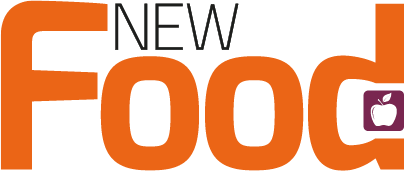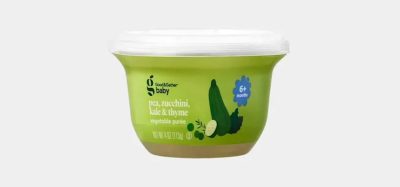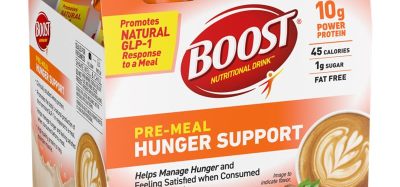Food authenticity – mitigating food crime risks and threats
- Like
- Digg
- Del
- Tumblr
- VKontakte
- Buffer
- Love This
- Odnoklassniki
- Meneame
- Blogger
- Amazon
- Yahoo Mail
- Gmail
- AOL
- Newsvine
- HackerNews
- Evernote
- MySpace
- Mail.ru
- Viadeo
- Line
- Comments
- Yummly
- SMS
- Viber
- Telegram
- Subscribe
- Skype
- Facebook Messenger
- Kakao
- LiveJournal
- Yammer
- Edgar
- Fintel
- Mix
- Instapaper
- Copy Link
Posted: 6 February 2025 | Sterling Crew | No comments yet
Food fraud continues to pose significant risks to global supply chains, undermining consumer trust and public health. Sterling Crew, Chair of the Food Authenticity Network and a leading food safety advocate, explores strategies to mitigate these threats and safeguard food authenticity.
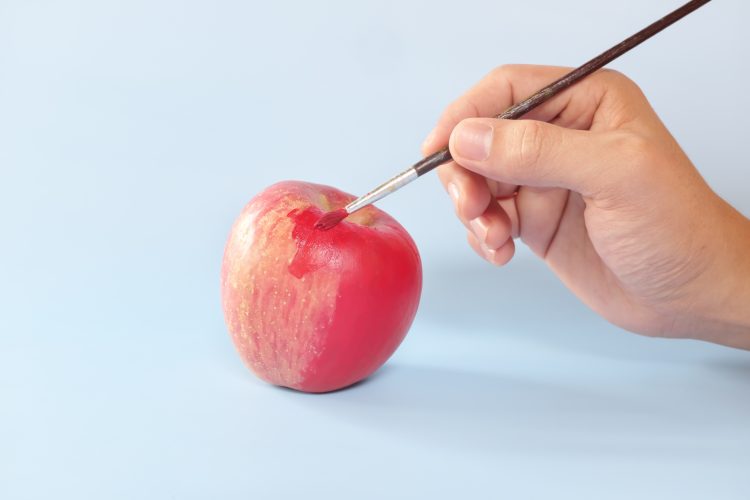

Food fraud is an age-old problem that reoccurs periodically in the global supply network. The practice of misleading the consumer goes back into history, with records from second century BC China indicating that such behaviour carried specific prohibitions, which were strengthened over the years and included hanging if the fraudulent food caused someone’s death.
Food fraud constitutes any deliberate action of a business or individuals to deceive others regarding the integrity of food to gain undue advantage including but not limited to adulteration, substitution, dilution, tampering, simulation, counterfeiting, misrepresentation and theft/diversion. There is no internationally harmonised legal definition of food fraud. Different jurisdictions have adopted different definitions of food fraud and take a different approach to regulate it. CEN and Codex are in the process of writing definitions, which should help to bring about harmonisation.
The cost and impact of food fraud
The prevention of food fraud is paramount to protect the trust of consumers and to maintain fair, sustainable business practices.
The Food Standards Agency estimates the total cost of food crime in the UK to be between £410 million and £1.96 billion per year.
Although no process can guarantee that food and food supply are not the target of criminal activity, there are tried and tested methods to improve the resilience of supply networks to fraud. Since the 2013 global issue of the fraudulent inclusion of horsemeat in UK beef products, there is worldwide consensus that improvements are needed not only to detect fraud, but to prevent it as well.
Food-related crimes, which include smuggling, counterfeiting and out-and-out theft, cost the global food industry $30-50 billion a year (£23-38 billion), according to the World Trade Organization. The Food Standards Agency estimates the total cost of food crime in the UK to be between £410 million and £1.96 billion per year. Food fraud can harm consumers, causing illness and even death in some cases. This was true in 2008 when melamine was used as a nitrogen source to fraudulently increase the measured protein content of milk, resulting in more than 50,000 babies hospitalised and six deaths after having consumed contaminated fraudulent infant formula.
Major scandals and recalls
Forensic accountants go some way to elucidate the long-established link between food and fraud, citing that it can be as profitable as illegal narcotics. The conviction consequences are less severe for food- related offenses and there is less enforcement resource to tackle it, making it an attractive option for organised crime. The problem is only set to rise across the food sector as food becomes more expensive. The overall price of food and non-alcoholic drinks in the UK rose by about 25 percent between January 2022 and January 2024, according to the Office for National Statistics.
Some of the major recalls related to food fraud include:
- Illegal dyes in spices (2003): Sudan Red dyes added to chilli powder enhance colour and price; the initial recall cost £100 million. Illegal dye enhancement of highly coloured spices (eg, turmeric, chilli, paprika) continues today.
- Chinese melamine scandal (2008): Adulteration of infant formula with melamine to boost nitrogen levels in the product (resulting in an elevated protein test). Thousands of infants hospitalised and six deaths, along with a global recall of Chinese products. An interesting refection that three of the perpetrators were executed, not unlike the Chinese second century BC laws.
- Horsemeat scandal (2013): Horsemeat detected in comminuted beef products sold across Europe; recall of millions of products and significant financial losses for the industry. There are still similar cases today.
- Parmesan cheese fraud (2016): Cellulose, a wood-based filler, in Parmesan cheese sold in the US; some products contained only 2 percent Parmesan cheese, the rest being fillers and other additives.
- Spanish olive oil fraud (2016): Mislabelling of lower-grade oil as extra virgin olive oil in Spain. Up to 80 percent of lower-grade oil found present along with additives and artificial colours.
- Canadian honey laundering (2018): Import of honey from China into Canada, where it was laundered and sold as Canadian honey. Some also contained banned antibiotics.
- Relabelling expired food and beverages (2023): Criminal gangs in Italy and Latvia relabelled durability dates to give false appearance that millions of units of food products were fresh and safe for consumption.
These examples demonstrate major incidences, but not all food fraud is global; it can be localised. A UK restaurant owner was recently sentenced to six years over the death of a peanut-allergy customer. Paul Wilson died from anaphylactic shock after restaurant owner Mohammed Zaman swapped almond powder for a cheaper one containing peanuts in a chicken tikka masala curry.
Challenges in combating food fraud
The Food Standards Agency’s National Food Crime Unit (NFCU) and Food Standards Scotland’s Scottish Food Crime and Incidents Unit (SFCIU) published the UK Food Crime Strategic Threat Assessment Report in September 2024, which includes four main themes:
- Misrepresentation of status, origin or durability date of red meat and poultry
- Waste diversion, including links to animal by-products handling within red meat and poultry supply chains
- Servicing of consumer demand for culturally preferred products through the slaughter, unlawful processing or importation of lamb and pork
- Authenticity challenges in the supply chains of commodities posing notable or persistent fraud risks to UK consumers arising from upstream, overseas adulteration and misrepresentation.
The global food system is becoming ever more complex. The days of a local supply chain are disappearing for most of our food. This brings with it challenges when sourcing food. This complexity works to the advantage of fraudsters. Some of the potential supply risks are due to disruption of normal supply due to catastrophic global events, which can unbalance the operational supply versus demand function. At a recent conference I was asked to list possible disruptive causes. I came up with 26, then gave up as I was becoming somewhat depressed with the size of some of the challenges ahead of us. Recruiting and retaining talent in the food sector is another major challenge.
Strategies for mitigating risks
The food industry (manufacturing, hospitality and retail) should assess its vulnerability to fraud as part of its routine risk assessments, putting risk mitigation steps in place as appropriate. To adequately protect itself against fraud, the food sector needs robust supply-system defence policies, more often supported by an analytical testing programme, whether designed to directly detect issues, target further investigation and audit, or purely as a deterrent.
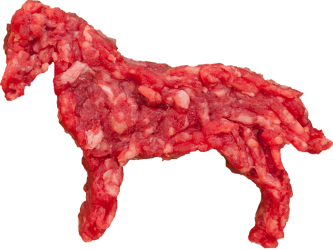

Analytical testing can be targeted with the help of data sharing and early warning systems. Testing can be used as a spot check to verify that control systems and certification are effective and trustworthy; it is not in itself a control or certification system.
Typically, the food sector will use risk-based prioritisation to conduct unannounced analytical spot tests on raw materials, to confirm they are what they purport to be. It is important to have a procedure in place for acting upon analytical results. This is how the horsemeat scandal was identified.
There are tools and methodologies to help mitigate the risk. My personal approach is to follow a seven-step process to moderate food fraud:
- Recognise food fraud is a risk and add it to the business risk profile and Food Safety Management System
- Map your supply network
- Identify the risks (internal and external) by thinking like a criminal
- Assess and prioritise risk
- Create an implementation action plan
- Track, review and communicate
- Develop a food fraud-fighting culture.
These steps should be seen as a cycle subject to regular review, especially when there is a change in risk. It is also a multifunctional company-wide responsibility that includes HR and Purchasing, not just the technical team. For me, it is important to understand the prevailing culture of mitigating food fraud. Too often, when I have been recruited to an incident at crisis point, I encounter cognitive dissonance among employees. People would say “I did not think it would happen to us”, “We have never had a problem, so thought we must be doing it right”, or “We knew we had to do something, but more pressing issues had to be dealt with.” Do not wait until you are in a crisis to develop a crisis management plan.
Collaboration and the future of food fraud prevention
Other tools that I would recommend are the Food Standards Agency’s Food Fraud Resilience Self-Assessment Tool alongside Vulnerability Assessment and Critical Control Points (VACCP), where the focus is on adulteration for financial gain, and PAS 96:2017 – a guide to protecting and defending food (updated version soon to be published).In addition, the Global Food Safety Initiative (GSFI) requirements on food fraud have played a significant part in bringing it to the attention of the global food sector. Strategies to mitigate food fraud include scientific analysis to test food authenticity, supply-chain risk assessment and data-led solutions. We are seeing early adoption of artificial intelligence (AI) to help turn this data into intelligence and insight. But AI may also be a threat if used by fraudsters.
The Food Authenticity Network (FAN) is a public-private partnership, established as a recommendation of the Elliott Review following the 2013 horsemeat issue. It is a key resource for any analytical testing programme. FAN brings together information regarding food authenticity testing and food fraud mitigation in one convenient open access platform for the benefit of global stakeholders, helping to create more secure supply systems and ultimately lead to increased consumer confidence in the food they buy.
Do not wait until you are in a crisis to develop a crisis management plan.
The free open-access resource has an authenticity database search tool, along with a compendium of techniques. It also publishes annual global food fraud reports to assist in identifying current and emerging trends in the foods most reported as being fraudulent. Joining the network is free at www.foodauthenticity.global. It is a great one-stop shop for food fraud-mitigating tools and is often used to demonstrate food fraud mitigation in third party audits under GFSI.
The Food Industry Intelligence Network (FIIN) operates in the UK and was also established following the Elliott Review by industry technical leaders to share intelligence on food authenticity. FIIN currently has over 66 members including major retailers, manufacturers and food service companies. Campden BRI curates a database to collect anonymised (via a legal host) industry data on food authenticity testing. This data is analysed to produce regular reports for the FIIN. Industry feedback across the globe has been positive, with the platform being admired for its unique method and approach.
It is the responsibility of food business operators to produce food that is safe and authentic; however, by working in partnership with local authorities, government departments and agencies, the food industry can better protect the public from food fraud. I believe the UK benefits from some of the safest and most authentic food and drink in the world. We need to be constantly on our guard to maintain this standard and prepared to mitigate the risks involved, both current and emerging.
I acknowledge thanks to Rachel Ward.
The views of the author are their own and may not be those of the organisations he is connected with.
About the author


He is co-founder of Kitchen Conversation, Managing Director of SQS and sits on the governance board at Safe to Trade. He is also on the audit governance board at Eurofins. He is the Independent Scientific and Regulatory Advisor at the food sharing app OLIO, British Lion Egg and Highfield Training. He is an Editorial Advisor at New Food.
Sterling has over 40 years’ experience of working in the field of international food safety, authenticity and governance. His experience as a regulator, retailer, brand owner and food manufacturer has given him a unique perspective of the challenges of food safety and authenticity in the global food supply network.
Related topics
Food Fraud, Food Safety, Packaging & Labelling, The consumer, Traceability, Trade & Economy
